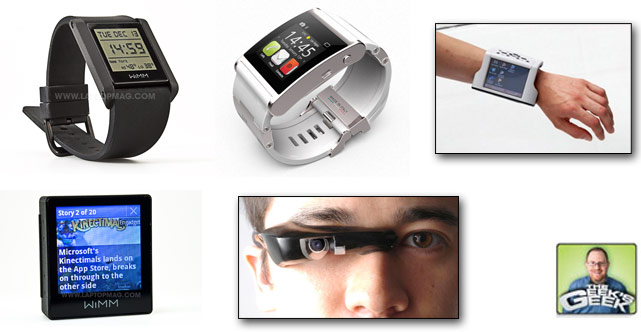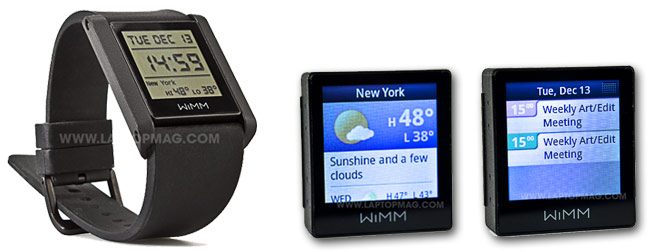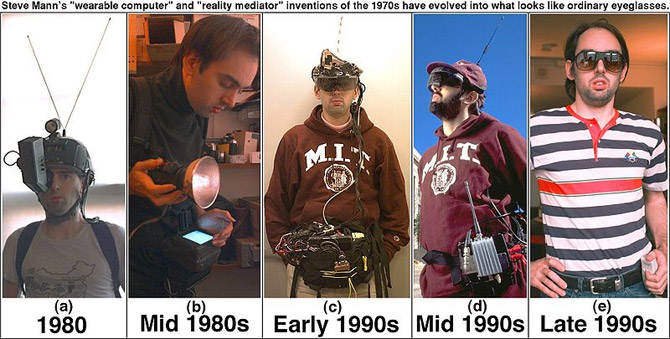The Time for Wearable Computers Has Finally Arrived
Despite the common misconception that technology is advancing at a blinding pace, things are moving way too slowly for geeks. Sure, we have quad core tablets and 4G phones, but it's nearly 2012, and we still don't have flying cars, cloned organs, or robotic servants that can do much more than vacuum. But after many years of false starts and broken promises, we may finally get the chance to live as cyborgs thanks to a new generation of wearable gadgets that allow us to stay connected even when our smartphones are buried in a purse or pocket.
Though phones and tablets allow you to access the Internet from anywhere and most even have cameras that let you combine real world information with virtual objects, they're way too clunky to use continuously, all day long. Imagine holding your phone in front of your face for an hour as you walk down the street, just so you can see what information it overlays on top of the landmarks you pass.
Just think about all the time it takes to pull your phone out, unlock it, and tap a few icons, just to read your messages and see whether they require a response. Those are seconds of your life you'll never have again. What if you could view the inbox right on your arm? And all the time the phone sits in a pocket, your wrist and ear tops are bare. What a waste of skin real estate!
This past fall, WIMM started selling a developer preview version of the world's first Android watch. I've been wearing one for three weeks and it still blows my mind that I can read news feeds from my favorite sites, view incoming calls, get the weather, play games, install custom apps, and someday soon check email on my wrist.
An Italian company called I'm Watch will be showing its own Android timepiece at CES. We've also heard that Apple is working on a curved glass iPod that goes around the wrist like some kind of iBangle, but that's just Cupertino crudite compared to the main course Google's preparing.
This week we read that Google is developing augmented reality glasses that would show virtual content on top of your real-world view like Google Goggles or Layar do on your phone. Having email, instant messages, and news feeds projected into my retina as I walk down the street? Viewing the Yelp rating, menu, and health report on a restaurant the minute I glance at its awning? Sign me up!
For years, the field of wearable computing has been limited to a select few inventors and pioneers who could either afford expensive, niche gadgets or had the skill to build their own. One of the great thrills of my career was meeting Steve Mann, a University of Toronto engineering professor who has been living life as a full-time cyborg for over 30 years now.
Sign up to receive The Snapshot, a free special dispatch from Laptop Mag, in your inbox.
Over a decade ago, Mann boasted that his wearable computer allowed him to filter images right in front of him, adding virtual information on top of real world objects or even filtering out undesirable images like ads on the side of a bus. In just the past few years, augmented reality has found a home in mobile apps like Google Goggles, Layar reality browser, and Wikitude, all of which display virtual information on top of real-world images viewed through your phone or tablet's camera.
You can even play AR games like DroidShooting, a first person shooter that lets you interact with virtual characters that invade the environment around you, just as long as you're looking at the world through your phone screen. We're heading toward a world where augmented reality content appears on the inside of your glasses or even your contact lenses. Making AR persistent leads to a whole new world of applications, like wearing virtual clothing that only your friends can see.
When I visited Mann on a trip to Toronto in 1999, he was wearing a full headgear apparatus with wires that connected to a series of circuit boards under his shirt and an antenna on top of his head that allowed him to achieve a low-speed cellular connection to a source on campus. His head gear was both a camera that could capture images in front of him and a tiny screen that could project images into his retina. Mann was able to control his computer using a single-handed keyboard device attached to his belt.
Since that time, Mann's inventions have become less and less obtrusive. A more recent photo shows him waring a pair of wire rim glasses that looks like it could have come straight from Lens Crafters. However, the rest of the world hasn't caught up with him yet.
The closest we've come to a mass market wearable computer is the ill-fated Xybernaut Poma, an ugly looking $1,499 headset that ran Windows CE when it was released to bad reviews back in 2002. A slew of major companies including Motorola make wearable computers for vertical markets or military use, but these aren't the immersive, flexible devices you'd expect to take home with you. For example, Zypad's WL 1100 bracelet computer is really designed for activities like scanning package barcodes in the stockroom, not staying connected on the go or changing your reality.
So why has it taken this long to bring us computer watches, augmented reality headsets, and other wearable goodies when pioneers like Mann were working on them so long ago? Part of the problem is technical. To mass produce something at a reasonable price and have it work as consumers, even early adopters, expect required big advances in optical technology, low power chips, and mobile connectivity. Only in the past couple of years have we gotten multicore SoCs (system on a chip) that fit into a tiny space and use very low wattage. We have huge 4G networks and Wi-Fi almost everywhere. We've got a couple of dominant mobile operating systems in Android and iOS now. And we're starting to see huge advancements in display technology that could enable really good glasses.
However, the biggest obstacle facing wearable computing is consumer acceptance. Will the millions of consumers who've made smartphones a part of their daily lives be willing to put a computing device around their heads, wrists, or necks? No doubt watches have the best chance of hitting it big, because people have been wearing timepieces on their wrists for generations. But what about more cyborg-like accessories such as glasses with built-in screens or large-screen bracelets that circle your whole arm? Will they seem too nerdy or dehumanizing for the masses? It's up to you. Don't let the future down.
Online Editorial Director Avram Piltch oversees the production and content of LAPTOP’s web site. With a reputation as the staff’s biggest geek, he has also helped develop a number of LAPTOP’s custom tests, including the LAPTOP Battery Test. Catch the Geek’s Geek column here every week or follow Avram on twitter.






